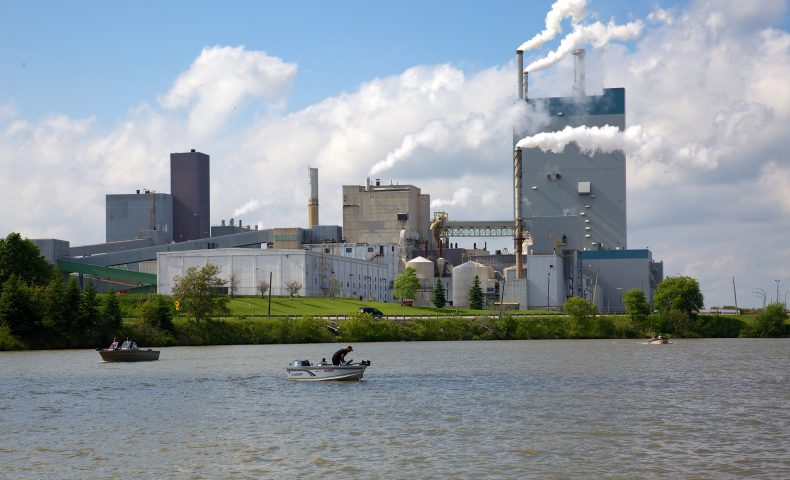
Features
Equipment & Systems
Pulp
Profile: Domtar Dryden pulp mill
Feb. 21, 2017 - Domtar makes products that people around the world rely on every day, and we make them at facilities around the world. Each location is as unique as the people who work there.
February 21, 2017 By Domtar
 Photo: Domtar
Photo: Domtar For the first instalment in our series of facility profiles, allow us to introduce you to our Dryden Mill.
The Dryden pulp mill sits along the Wabigoon chain of lakes in northwestern Ontario. The city of Dryden is one of the smallest communities in Ontario, but it offers many natural resources that make it well-suited for pulp and paper production and a vibrant home for pulp mill workers and outdoor enthusiasts.
Dryden pulp mill production
The pulp mill has produced kraft pulp since 1913, utilizing the long, fine fibers of the spruce, pine and balsam fir trees that grow in Dryden’s cold climate. The cellulose fibers of these softwood trees produce a strong grade of pulp known as northern bleached softwood kraft, which is used in a variety of paper grades produced across North America.
Bleached kraft pulp is made by cooking wood chips with a chemical solution at high temperature and pressure. The process separates the cellulose fibers from the other parts of the wood. The nearly pure cellulose fibers are washed and bleached, then dried and baled for shipment to manufacturers who make many of the products you use every day.
The pulp’s strength makes it the perfect component for a wide variety of end-uses, such as towel and tissue, printing and writing paper, publication and magazine paper, lightweight coated papers and technical specialty papers. The Dryden Mill supplies pulp to manufacturers in each of these market segments.
Brightness and cleanliness are two other important quality measures in pulp. Each of these affects the end product, such as the brightness of office paper.
Nearly two-thirds of the pulp produced in Dryden is shipped to manufacturers of paper towels and bath and facial tissue. Most of the remaining pulp is used to make copy paper and uncoated offset printing paper, sometimes at other Domtar mills. Some of what’s produced at the pulp mill gets used to make coated publication paper, packaging and label paper, magazine papers and technical specialty paper grades.
Community involvement
The Dryden pulp mill also plays an important role in its community. The pulp mill is the largest employer in Dryden, supporting more than 350 jobs, and its operations have an estimated regional economic impact of $603.4 million.
For the past 60 years, the pulp mill has sponsored the annual Dryden Conservation Camp in partnership with Dryden High School, the local school board and Ontario’s Ministry of Natural Resources and Forestry. Students who attend the camp learn about the many aspects of forestry, including harvesting and renewal, seedling production, inventory, soils and fire management and protection. The firefighting session was especially popular with campers.
Many camp alumni have gone on to pursue careers in resource management. Graduates of the Dryden High School Conservation Course have become foresters, biologists, ecologists and engineers; many others work in one of the many other fields related to resource management.
Mill colleague Dianne Loewen is coordinator for forestlands and public affairs at the Dryden pulp mill, and she has led the mill’s role in conservation camp for more than a decade. She describes the Dryden community as warm and family-oriented.
“In my experience, you can walk up to just about anybody at the mill and it’s almost guaranteed that they will be involved in a host of volunteer activities, whether it’s coaching a local sports team or participating in the Rotary Club,” she said. “It’s something that I love about my community, in and out of work.”
SOURCE Domtar Newsroom
Print this page